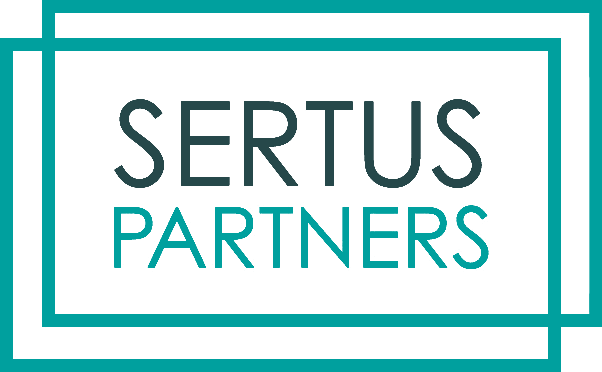Kris’s Salesforce Release Picks: Summer ’24 Edition
Sertus’s Technical Director, Kris Hollen, has handpicked the most valuable updates from the Salesforce Summer ’24 Release. We believe these carefully selected features will significantly benefit our clients by enhancing productivity, streamlining processes, and unlocking new opportunities. To help you prioritize your implementation strategy, we have organized these highlights based on their ease of adoption.

AUTOMATICALLY ENABLED OR EASY TO TURN ON
- MFA Is On by Default for Direct Logins to Production Orgs
To strengthen the security of your Salesforce account, multi-factor authentication (MFA) will now be a default feature for all new production orgs when they go live. This means when users log in to a newly created production org, they will need to complete the MFA process as an extra security step. This update will not affect your existing sandbox orgs or those currently in a trial period. However, once a trial org is converted to a paid subscription, MFA will become a standard part of the login process.
- Data Cloud Reports and Dashboards
If your organization currently utilizes Data Cloud, you can now:
- View your data in a matrix format, allowing you to analyze multiple dimensions at the same time. This feature helps you identify trends, patterns, and connections between different variables, giving you a more complete view of your organization’s performance.
- Include unstructured data, such as text fields and document attachments, in your reports. This enhancement allows you to incorporate valuable information that was previously not available in reports, giving you a fuller picture of your data.
- Use Einstein Generative AI to receive smart suggestions and assistance when creating formulas. This feature aims to simplify the process of creating complex report formulas, saving you time and reducing potential errors.
Example: An organization’s program manager can now create a matrix report that shows volunteer participation by region, program, and month, all in one view. This allows them to quickly identify which regions and programs have high volunteer engagement and where additional volunteer recruitment efforts may be needed.
The “So What?”: The enhancements to Data Cloud Reports and Dashboards allow you to gain deeper insights from your data, identify trends and patterns more easily.
- Permissions and Sharing
This release offers new summary pages that provide a clear overview of access settings for users, public groups, permission sets, and permission set groups. These pages allow you to quickly understand who has access to what within your Salesforce org, all within a few clicks. Additionally, user access policies are now generally available. This feature provides a centralized location to manage user access across your entire Salesforce org. With user access policies, you can create and apply consistent rules that ensure users have the right level of access to perform their jobs while still keeping your data secure.
Example: An IT admin can use the new summary pages to quickly audit access settings for a specific user or group, ensuring that they have the appropriate permissions to perform their job duties without exposing sensitive data.
The “So What?”: The new summary pages and user access policies streamline the process of managing and auditing user permission. We suggest using this feature as a quick way to review the user access policies and permissions, and will be happy to help!

REQUIRES SOME CONFIGURATION OR SETUP
- Collect User Input to Build a List of Records from a Screen Flow
The Repeater component, now generally available for screen flow automations, allows you to efficiently gather information about multiple items of the same type on a single screen. This feature is particularly useful when you need to collect details for a list of related records, such as beneficiaries on an insurance policy or attendees for an event. With the Repeater component, users can dynamically add as many entries as needed directly on the screen, without navigating to a separate page or form. Once the user submits the screen, you can easily loop through the list of entries and create corresponding records in Salesforce. This feature streamlines the data collection process, improves the user experience, and reduces the effort required to create multiple related records.
Example: An organization can use the Repeater component to allow event attendees to register multiple guests for an event on a single screen, simplifying the registration process and reducing the chances of errors or omissions in the guest list.
The “So What?”: The Repeater component simplifies the process of collecting and creating multiple related records, reducing the time and effort required to manage complex data relationships and improving the overall user experience.
- Update Choices on a Screen in Real Time with Reactive Collection Choice Sets
You can now create screens where different elements automatically update based on changes made elsewhere on the same screen. This makes for a more interactive and user-friendly experience. For example, let’s say you have a table of data on a screen, and you also have a dropdown menu that lets users choose from a list of options. With this new feature, you can set up the dropdown menu to automatically update its list of options based on what the user selects in the data table. So, if the user clicks on a different row in the table, the dropdown menu will instantly show a new set of relevant choices, without the user needing to manually refresh anything. Before this update, different parts of a screen couldn’t automatically react to changes made in other parts. This limited how interactive and dynamic screens could be. Now, you can build screens where all the elements work together and respond instantly to user actions, creating a smoother and more engaging experience.
Example: An organization can use a screen with Reactive Collection Choice Sets to create a donation form that dynamically updates the available donation allocation options based on the donor’s selected program of interest. For instance, if a donor selects “Education” as their program of interest, the form will instantly display specific education-related initiatives or projects to which the donor can choose to allocate their funds. This ensures that the donation form presents relevant and targeted options, making it easier for donors to support the causes they care about most.
The “So What?”: By enabling screens to dynamically update based on user actions, you can create a more engaging and efficient user experience, reducing the time and effort required to complete tasks and improving the overall quality of data collected through your Salesforce org.
You can now use threading tokens in your automated emails to ensure that when someone replies to the email, their response is automatically connected to the correct record in Salesforce. This feature is entirely invisible to the recipient, but it helps keep email conversations organized on your end and ensures that important replies don’t get lost or disconnected from the records they belong to.
Example: A fundraising manager sends out a personalized thank-you email to a donor after they make a contribution. By including a threading token in the email, any reply from the donor will automatically be associated with their donor record in Salesforce. This allows the fundraising manager to easily track and respond to the donor’s inquiries or feedback without having to manually search for the relevant record.
The “So What?”: Threading tokens keep your email conversations organized in Salesforce, no matter who you’re communicating with. This feature saves time, reduces manual effort, and improves the overall organization of email conversations, making it easier for your team to manage donor relationships and track important interactions. When an external party replies to your email, their response is automatically connected to the right record, saving you time and effort.
If your organization has Salesforce Shield, you can use the Event Log File Browser, now generally available, which allows users to access event log files directly from the Setup menu within Salesforce. This feature eliminates the need for third-party tools, simplifying the workflow and reducing dependencies on external solutions. Additionally, the Event Monitoring system now includes a new event log object framework. This framework standardizes the capture of event data into standard objects, enabling users to easily query the data via API. With this enhancement, users can access and analyze event data directly within the Salesforce platform, without relying on external tools.
Example: A security administrator suspects that an unauthorized user has accessed sensitive donor data. Using the Event Log File Browser, the administrator can quickly review the event logs to identify any suspicious activity, such as login attempts from unfamiliar IP addresses or unusual data exports. By investigating the event logs within Salesforce, the administrator can take swift action to address the potential security breach and protect the organization’s data.
The “So What?”: By providing a centralized and user-friendly way to investigate event logs, Salesforce Shield helps organizations identify potential security risks, ensure compliance, and take proactive measures to safeguard their data.

MAY REQUIRE SIGNIFICANT INVESTMENT BUT WORTH A REVIEW
- Einstein Platform
The Einstein Platform enables you to build intelligent solutions that address your specific business challenges using generative AI, predictive AI, and other AI tools. Generative AI can help you create content, such as product descriptions or customer responses, saving your team time and effort. Predictive AI enables you to make data-driven decisions by providing insights into customer behavior, sales forecasts, and more. Salesforce continually improves the functionality, security, and performance of AI features, ensuring that you have access to the latest advancements in artificial intelligence technology.
Example: A marketing team can use Einstein’s predictive AI to identify which donor leads are most likely to convert, allowing them to focus their efforts on the most promising opportunities and improve their overall conversion rates.
The “So What?”: By incorporating AI-powered solutions into your workflows, you can automate repetitive tasks, make more informed decisions, and provide better experiences for your customers.
- Streamline User Interactions with Einstein Copilot
Einstein Copilot, a conversational AI assistant, can be integrated into Slack, Salesforce Anywhere, and Einstein Search. In Slack, Einstein Copilot can help users access and update records, answer questions, and automate tasks without leaving the interface. Within Salesforce Anywhere, Einstein Copilot provides context-specific suggestions and insights to improve collaboration and decision-making. When integrated with Einstein Search, Einstein Copilot delivers more accurate and relevant search results by understanding the context and intent behind queries.
Example: A non-profit’s grant writer can ask Einstein Copilot within Slack to provide the latest information on a specific grant application, such as the submission deadline, required documents, and the current status of the application. The AI assistant would quickly retrieve the relevant information from Salesforce, saving the grant writer time and allowing them to stay informed without navigating away from their current workspace.
The “So What?”: By leveraging Einstein Copilot, you can create a more intuitive and efficient user experience, reducing the time and effort required to complete tasks and find information within Salesforce. Note: The availability and functionality of Einstein Copilot may depend on your Salesforce edition and enabled features.
ADMIN-FOCUSED ENHANCEMENTS
In addition to the main features highlighted above, the Summer ’24 Release also includes several enhancements that will be particularly useful for Salesforce admins. These updates focus on improving the customization and management of your Salesforce org, making it easier for you to create a tailored and efficient experience for your users.
- Fine-Tune Your Record Pages
The Blank Space component in the Lightning App Builder lets you adjust the alignment of fields on Dynamic Forms-enabled record pages. You can also show or hide individual tabs within a Tabs component based on specific visibility rules. These updates give you more control over your record pages’ appearance and functionality.
- Manage Flows with Ease
The new Automation Lightning app provides a central location to access and manage your flows. Create new flows, open existing ones, and use list views to identify recently modified flows or those with errors. Search for flows by keyword and filter or sort them based on type, progress status, last modified date, and more. The app also provides direct access to helpful resources like the Trailblazer Community and relevant Trailhead learning material.
- Reduce Duplicate Records
The Create Records element in flows now allows you to check for existing records that match specific criteria before creating new ones. Choose to either skip or update matching records based on your preferences. Note that some field-level configurations and validations in your org may override the settings in the Create Records element.
Related Articles
Salesforce Release Spring ‘25 Edition
Salesforce Release Spring ‘25 EditionWelcome to the latest Salesforce release! We have curated the most impactful features from the Spring '25 Release, which introduces features that can significantly benefit non-profits by improving efficiency, simplifying data...
Kris’s Picks: Salesforce Winter ‘25 Edition
Kris's Picks: Salesforce Winter ‘25 EditionWelcome to the latest Salesforce release! Kris Hollen, our Technical Director at Sertus, has curated the most impactful features from the Winter '25 Release. These selected updates are designed to enhance your productivity,...
